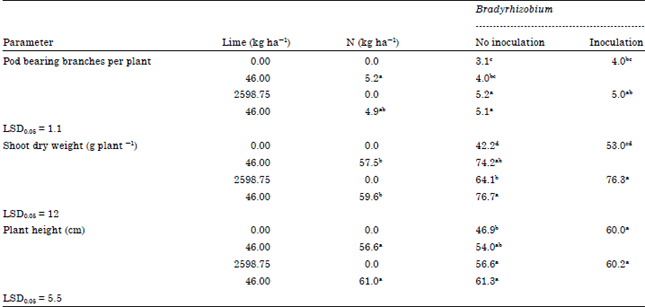Research Article
Growth and Nodulation Response of Soybean (Glycine max L.) to Lime, Bradyrhizobium japonicum and Nitrogen Fertilizer in Acid Soil at Melko, South Western Ethiopia
Ethiopian Institute of Agricultural Research, Jimma Research Center, Ethiopia
Tesfu Kebede
Ethiopian Institute of Agricultural Research, Jimma Research Center, Ethiopia
Jafer Dawud
Ethiopian Institute of Agricultural Research, Jimma Research Center, Ethiopia











